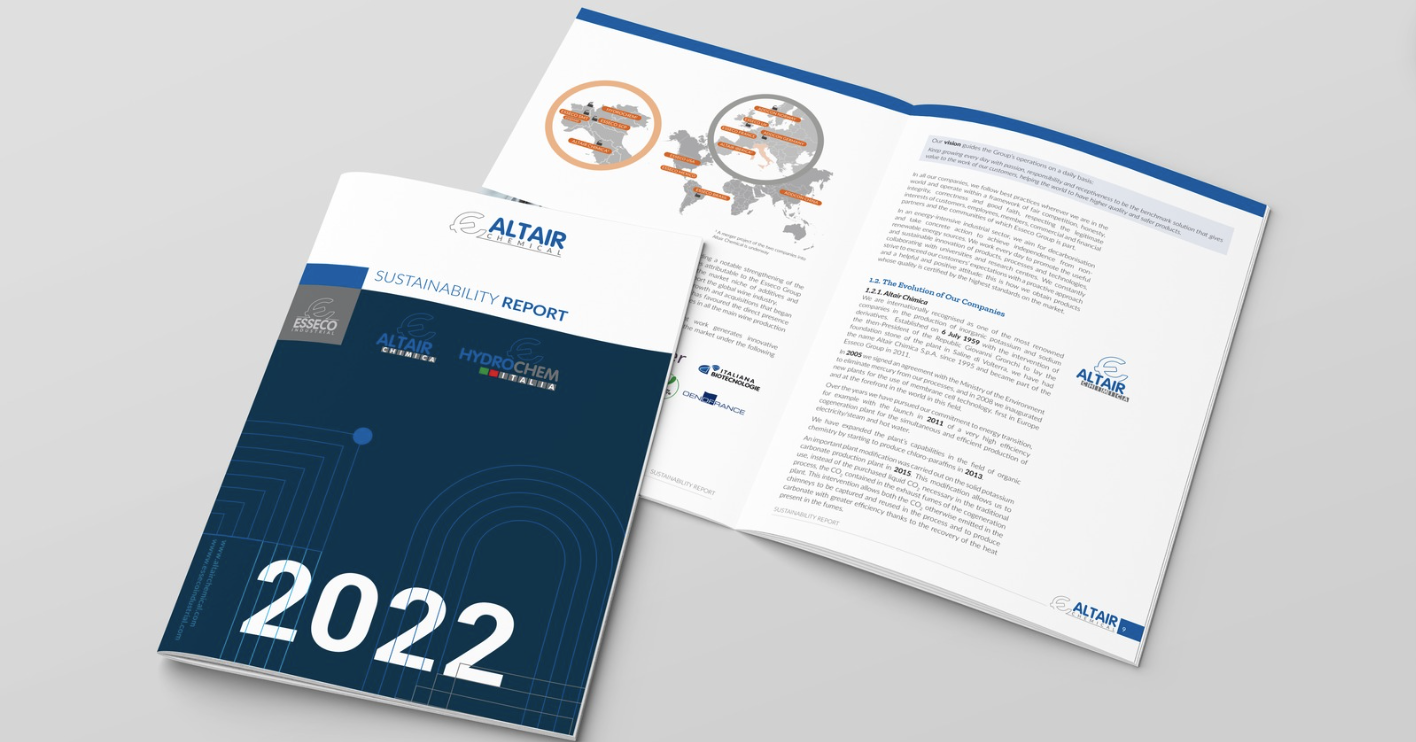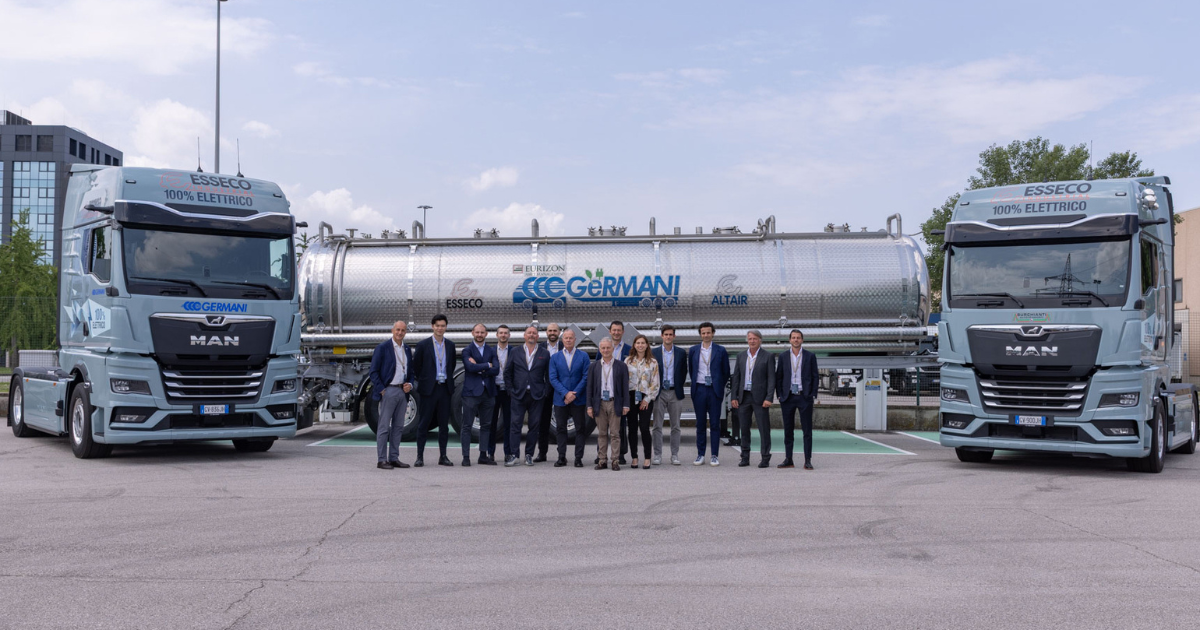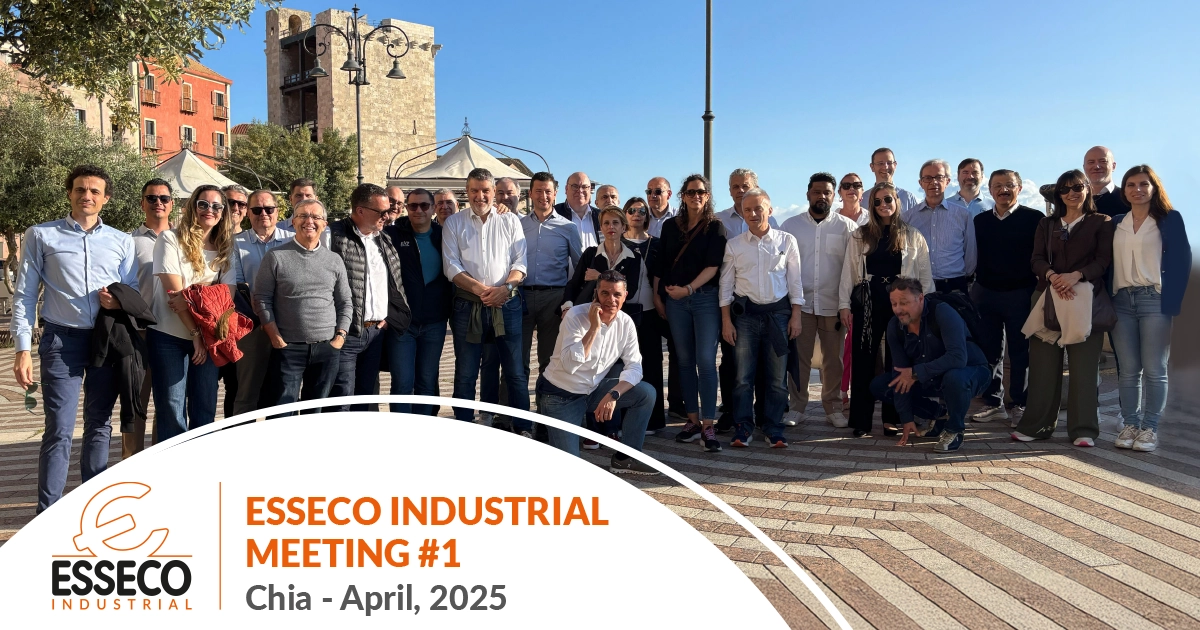June 10, 2025 The photography exhibition titled “Saline di Volterra, a Presidential Inauguration (1959)” was…

In anticipation of the corporate merger that took place at the beginning of January, Altair Chemical drafted its first Sustainability Report for the year 2022, concerning its two plants in Saline di Volterra (Pisa) and Pieve Vergonte (Verbano-Cusio-Ossola). It is a formal document where it certifies its commitment in terms of ESG, namely from an environmental, social, and governance perspective. This is not a new experience for the Pisa site, which has been included in the sustainability report of the Tuscan chemical sector for nine years.
“We acquired the Saline di Volterra plant in 2011, while we took over the Pieve Vergonte site from a crisis committee at the Ministry of Economic Development in 2019,” says Roberto Vagheggi, General Manager of Esseco Industrial and CEO of the Chlor-Alkali division, which has a total of 186 employees and an overall turnover of about 420 million euros. “Over these years, we have embarked on a path of renewal and production enhancement and environmental attention that continues today with substantial investments. In our first corporate sustainability report, we illustrate the many research and development projects carried out over the years and our commitment to safety and sustainability throughout the entire supply chain, with quality certifications of our processes. As energy-intensive enterprises,” Vagheggi continues, “we have always worked towards responsible use of energy sources. In addition to installing photovoltaic panels on the production sites, we have signed a Power Purchase Agreement capable of providing 43,800 MWh per year and we have founded Renewability, a consortium company that brings together several industrial realities with an investment of 11 million euros.”
For this purpose, the two hydroelectric plants in Pieve Vergonte, capable of providing a total of 18 MW of power, thus bringing the zero-emission energy to 75 percent in the Piedmont site, have had a significant impact. The energy mix of Altair Chemical is also completed by two high-efficiency cogenerators – whose fumes are partially reused in the processes – and the steam produced with hydrogen (resulting from electrolysis), whose residue not used in the production of hydrochloric acid is then valued in a bi-fuel generator. “We limit emissions into the atmosphere and return the water to the environment after its use,” explains Vagheggi. “The circular approach is also evident in several productions including ferric chloride.”
The Sustainability Report also indicates short and long-term goals for the Esseco Industrial division. From increasing self-produced energy to improve CO2-free energy efficiency, to feasibility studies for reducing water consumption, to the use of electric trucks and the enhancement of rail transport to decrease greenhouse gas emissions. From supporting cultural and charitable initiatives in the territories, such as the stadium in Saline and the community dining hall in Pieve Vergonte. From the firm decision to continue the safety policy to achieve “zero injuries,” to the application of innovative software for energy and production monitoring.
“The well-being and safety of our collaborators, as well as the attention to the local communities that host our facilities, on which we want to continue to invest in innovation and efficiency, – concludes Roberto Vagheggi – represent for us essential prerogatives for the future corporate development, as well as continuing to reduce environmental impact, protecting water resources, and increasing the supply of zero-emission energy to meet market demands.”
To browse the Sustainability Report, click on the provided link.



